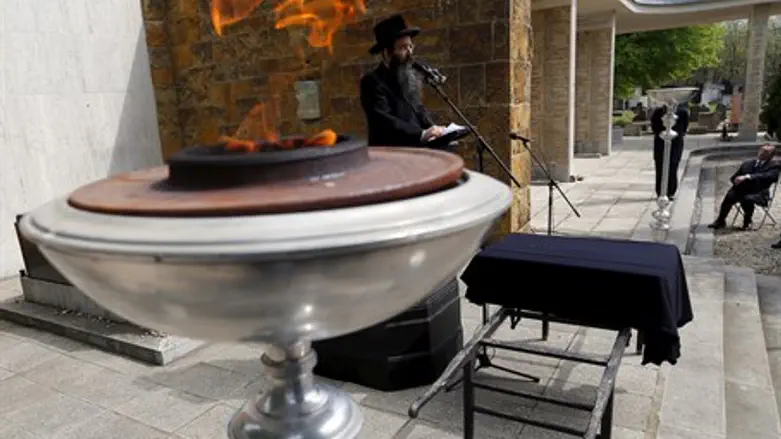
The remains of Jews murdered during World War II and found in the Danube river in 2011 were buried in Budapest on Friday, laying to rest a long-running saga over their identity and cause of death.
The bones, some pockmarked with bullet holes, are now thought to have belonged to Jews shot on the banks of the Danube by members of the Hungarian Nazi-allied Arrow Cross party in late 1944 or early 1945.
"I remember it like it was yesterday," Peter Kardos, a chief rabbi in Budapest who survived the mass shootings as an eight-year-old, told AFP at the ceremony.
"There were hundreds of us lined up by the river, then we heard an order that those with children should leave, so my mother took my brother and me away," he said.
"We were lucky as they didn't shoot children that day for some reason."
The fate of the skeletons had lain dormant for several years because of the bones' disputed origins, as well as recent wrangling between the Hungarian authorities and Jewish community leaders over their burial.
Around 200 people including a government minister attended the solemn service in the Jewish cemetery on the outskirts of Budapest.
"Their burial is not just for those shot during the last few months of the war but perhaps also for those whose bones did not even remain," Andras Heisler, head of Hungary's largest Jewish organization Mazsihisz, told mourners.
The bones were discovered in June 2011 during renovation work of the Margaret Bridge in Budapest, where divers spotted them wedged at the bottom of a pillar.
Forensic examinations of the fragments indicated they belonged to more than 20 different people, including women and children, who had probably died during the war.
But as investigations into the victims' identity and cause of death proved inconclusive, authorities soon closed the case and removed the bones to storage where they remained until an anthropology student ran DNA tests on them last August.
The results revealed that at least nine of 15 samples from the bones were almost certainly Ashkenazi Jews from Europe, while the other six could also be of that ethnicity.
With mounting evidence that the bones were probably those of Jewish victims of the Arrow Cross, Jewish religious leaders called for their immediate interment in a Jewish cemetery.
Authorities initially preferred a non-denominational burial, given the possibility -- albeit smaller -- that the bones may have belonged to non-Jews killed when Nazi German explosives destroyed part of Margaret Bridge in November 1944.
Agreement on Friday's ceremony was finally reached earlier this year.
The affair added fuel to a growing debate over the degree of Hungary's collaboration with the Nazis.
Jewish groups have sometimes accused Prime Minister Viktor Orban's right-wing government, in power since 2010, of downplaying Hungary's role in the Holocaust during which some 600,000 Hungarian Jews perished.
Last year, however, Orban admitted his country’s role in the Holocaust, saying many Hungarians chose "bad instead of good" in helping deport Jews to Nazi death camps.
There has also been a growing trend of anti-Semitism in Hungary, with the extremist Jobbik party being behind much of it.
In November of 2012, one of Jobbik’s members released a statement saying that a list should be compiled of all of the Jewish members of government.
He was followed by another Jobbik member who called publicly for the resignation of a fellow MP who claimed to have Israeli citizenship.
(Arutz Sheva’s North American desk is keeping you updated until the start of Shabbat in New York. The time posted automatically on all Arutz Sheva articles, however, is Israeli time.)